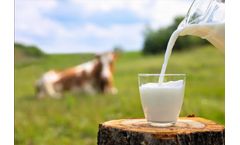Refine by
Milk Processing Articles & Analysis: Older
10 articles found
Find answers to FAQs about milk pH. Introduction Milk, a staple in many diets, is not just a simple beverage. ...
What is being done to cut Greenhouse Gas Emissions in the Milk Production Process? Under the 2008 Climate Change Act, the agricultural industry has pledged to reduce 2008 GHG emissions by 11% by 2020.2 Each and every dairy farmer must contribute towards this national goal. ...
With Edinburgh Sensor’s gas detection solutions you can control the levels of temperature and moisture levels, meaning a much more successful harvest. https://edinburghsensors.com/news-and-events/stored-grains/ Cutting Dairy Farm Emissions – We offer a range of solutions for monitoring the methane and carbon dioxide created during the milking ...
In general, milk protein concentrates provide a concentrated source of protein for sensory and functional properties in the final application process to meet nutritional value. ...
The dairy plant belongs to one of the largest cooperatives in Italy – a leader in ultra-high temperature (UHT) processing of milk and fresh cream. With a supply of 150,000 litres of milk per day, sourced strictly from the surrounding areas, this plant produces more than 80 kg of cheese and 1,000 kg of whey and cream every day. ...
The Customer: A large milk processing plant located in the United States with global distribution. ...
Sabarkantha District Co-operative Milk Producers Union started in 1964, and has progressed to a fully integrated milk processing organisation involved in reception, pasteurisation, condensing, chilling and the supply of milk & milk products. The organisation is one of the biggest co-operative ...
Description of the plant The wastewater from the production is buffered in a pump sump which is designed to buffer peaks of flow and load. The pump sump also works as a fat trap. From this stage, the water is lifted to the biological reactor where organic substances which are mainly milk sugar and other organic compounds are decreased by microbiological actifity. The installed high effective ...
During the early 1970s, countries established executive programs to promote dairy farming; the major objective was to attain self-sufficiency in milk production. A massive investment was set up for importing top class cattle, complying with top industry operating standards, and a simultaneous introduction of the latest technology in processing, packaging, and ...
In Karnataka, dairy development is a positive and significant as state contributes towards milk production, marketing, and processing of various dairy products in India. ...









